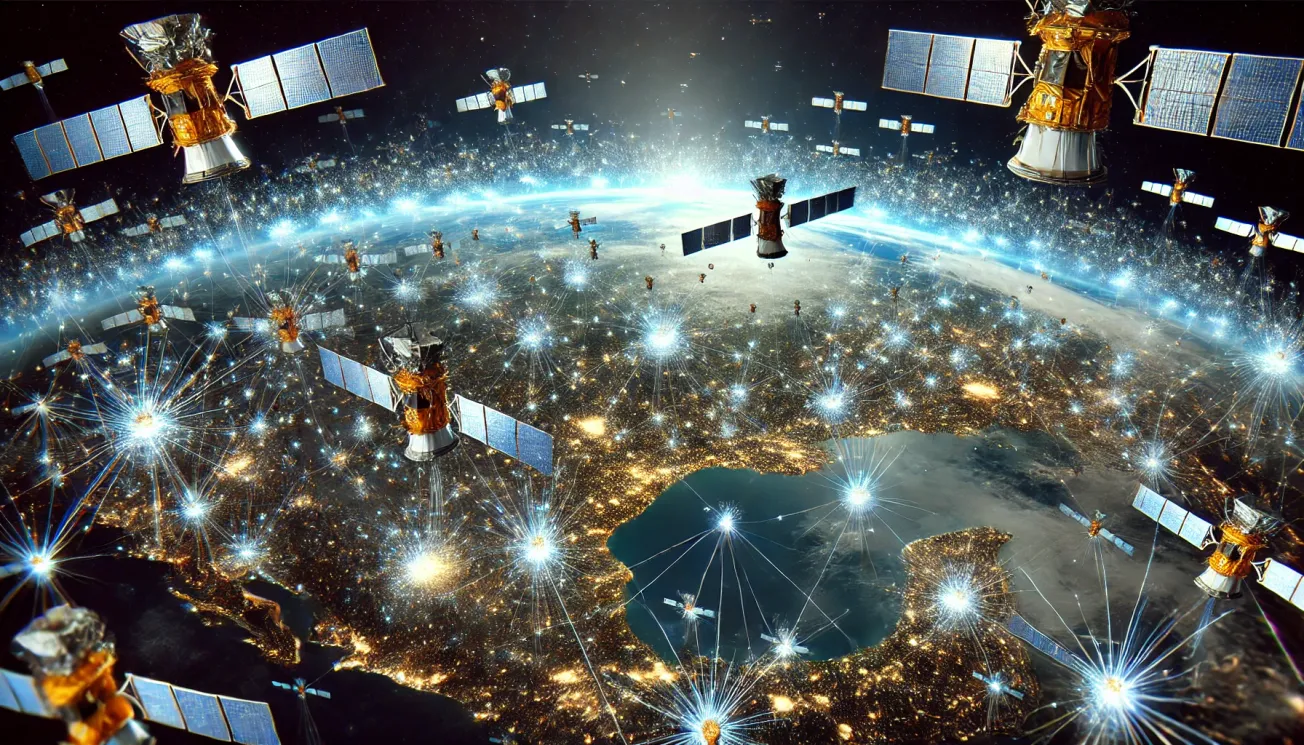Imagine a world where a single company controls nearly two-thirds of all active satellites, shaping the flow of global information. This isn't science fiction—it's the reality we're approaching with SpaceX’s Starlink.
With 7,000 satellites in low Earth orbit (LEO) as of 2025, Starlink dominates the satellite internet industry, dwarfing its competitors. This rapid expansion has sparked regulatory scrutiny, national security concerns, and fears of a potential monopoly.
So, is Starlink truly on the verge of becoming a monopoly, or is it simply years ahead of the competition?
The Case for Monopoly Concerns
Starlink has outpaced every competitor in satellite broadband, giving it an outsized influence over global communications. While it’s not the only satellite internet provider, its rivals are nowhere close in scale:
- OneWeb operates just one-tenth the number of satellites, despite backing from the UK government.
- Amazon’s Project Kuiper is still in early stages, with commercial service not expected until 2026.
- AST SpaceMobile and other players focus on niche markets, such as direct-to-mobile satellite communications, rather than widespread broadband.
This overwhelming market share has raised alarms among regulators worldwide.
Regulatory Scrutiny and Antitrust Concerns
Governments and regulatory bodies are increasingly wary of Starlink’s dominance:
- The U.S. Federal Communications Commission (FCC) has created a new Space Bureau to ensure competition in satellite communications. FCC Chairwoman Jessica Rosenworcel has warned that "our economy doesn’t benefit from monopolies."
- The European Union is developing IRIS², a state-backed satellite constellation aimed at reducing reliance on Starlink.
- Brazil, where Starlink controls 46% of the satellite internet market, is inviting Chinese competitors like Spacesail to break its dependency.
With increasing global scrutiny, could Starlink face the same antitrust challenges that once reshaped the telecom industry?
The Consequences of Starlink’s Near-Monopoly
Critics argue that Starlink’s unchecked dominance could lead to several long-term risks:
- Control over key orbital slots, making it difficult for new competitors to launch their own satellite networks.
- Increased reliance on a U.S.-based private company, creating national security concerns for countries without their own satellite networks.
- Market manipulation potential, as Starlink could theoretically dictate pricing or limit services in certain regions.
A historical parallel is AT&T, which once controlled most of the U.S. telephone network before being broken up in 1982 due to antitrust laws. Could Starlink face a similar fate?
Can Competitors Catch Up?
While Starlink is dominant, competitors are not sitting still:
- OneWeb is partnering with the UK and European governments for future expansion.
- Amazon’s Kuiper is leveraging AWS infrastructure for a major 2026 launch.
- China’s Guowang satellite project aims to counter Western satellite dominance with a 13,000-satellite constellation.
While none of these companies match Starlink’s scale today, their growing ambitions suggest that competition is far from dead.
Is Starlink Making Space Too Crowded?
Beyond market concerns, Starlink’s rapid expansion is causing orbital congestion issues.
- NASA and the European Space Agency (ESA) have warned that Starlink’s satellites increase collision risks in LEO.
- Other satellite operators have struggled with securing launch permissions due to orbital crowding caused by Starlink’s fleet.
- Astronomers have criticized Starlink for interfering with ground-based telescopes, impacting space observation.
As governments focus more on sustainable space policies, could Starlink face future regulations limiting its growth?
Conclusion: A Dominant Force, But For How Long?
Starlink may not be a monopoly yet, but its control over satellite internet is close enough to raise major concerns.
Regulators and competitors are actively pushing back, but Starlink’s lead is so vast that it may take years—or even decades—to balance the playing field.
The big question remains: Will future competition rise, or will Starlink cement itself as the world’s internet provider from space? The answer may reshape the future of global communications.






